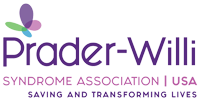There are hundreds of different options when it comes to picking curriculum which can make it both exciting and overwhelming. Hopefully by the time you’re done reading this you’ll feel at least a little more prepared. As with all the articles in this series, we’ll discuss both distance learning through your school and traditional homeschooling. The three focuses of this article – what, where, and how – will apply to anyone schooling at home, whether you are putting together a full curriculum or just looking to supplement.
What to Use
How your child learns is an important thing to consider when picking curriculum. If you know your child learns best with hands on learning where they can touch things or move around, you’ll want to look for material that allow you to easily incorporate movement and touch. If your child responds well to videos, then online based curriculum may work well. For children who struggle with reading, you won’t want to pick curriculum that is reading intense. A great benefit of homeschooling is that you have the flexibility to pick what works best for your child. The Way They Learn is one popular book on how to determine your child’s learning style/preference. Keep in mind that most of us do not perfectly fit into just one style, but knowing your child’s dominant preference is certainly helpful.
Another aspect to consider when picking curriculum is the homeschooling laws in your state. If you are able and chose to homeschool completely independently, you will likely have free reign over what curriculum you can use. If you homeschool through a public charter school, private distance learning school, or an independent study program through your school district, you may be a little more limited in your curriculum choices. Along with potential limitations, you will want to be aware of the requirements for your state to make sure you are covering all the required subjects. This is particularly important if you are planning to have your child return to traditional school; the older the child, the more important this becomes. Your local school district or state’s Department of Education website will list requirements by grade level, and some states have updated their websites recently to include additional resources for distance learning.
There are two main methods for formal curriculum: all-in-one “boxed”, or selecting curriculum for each subject individually. So-called “boxed” curriculum can be online, regular textbooks, or a combination. Some companies that offer boxed curriculum produce all of their own material, and others combine subjects for you from other companies, saving you from doing it yourself. The advantage to this option is that pretty much everything you need for a grade level will come from one place. The disadvantage is that you may not necessarily like all of the material offered and some companies may not allow you to mix grade levels if you have a child who is working at different levels in different subjects. The other option is for you to select material for each subject individually. The advantage to this method is that you have greater flexibility and options for each individual subject and can vary the levels by subject, if needed. The disadvantage is that it takes a little more work to pick curriculum for each individual subject.
Under normal circumstances, I encourage families to see if there’s a homeschooling conference in their area because many include vendor halls where you can browse both the options for boxed curriculum and individual subjects. There you can flip through books, see sample videos, and speak to the sales representatives. Absent the ability to do that, you are left with my other recommendation: Cathy Duffy Reviews. Her website contains good summaries of all the major curriculum choices, both all-in-one options and individual subject choices. If browsing so much information online isn’t your style, she has an amazing book of reviews as well. What I like about Cathy Duffy Reviews is that her book includes a chart with rating curriculum on things like how much prep time is required, how much parent instruction is required, if it’s good for independent learners, what type of learner it works best for (kinesthetic /analytical/social/structured), and what type of learning philosophy the curriculum supports. On the website, you can search by all of these aspects or just browse by grade level or subject.
Last but not least, you want to be aware of curriculum cost which can range from free, to well over a thousand dollars for something like a boxed curriculum set. Some public charter schools provide funding which you can use to purchase curriculum. You may want to splurge on a favorite subject or one that requires more attention, and economize on others. You do not have to spend a lot of money if you don’t want to or can’t afford it.
Where to Get Curriculum
For those schooling at home through your school’s distance learning plan, you’ll be provided with the curriculum for your children. With the sudden switch to distance learning last year, schools were often scrambling to deliver everything studentsneeded, leaving many parents feeling like their child’s education was lacking. If this coming year leaves you feeling the same, you may want to supplement with extra curriculum. For those making the switch to traditional homeschooling, you’ll need to supply your own curriculum.
If buying your own, either through charter school funds, your own money, or a combination, there are a variety of places where you can get materials. Note that the Cathy Duffy Reviews website links to all the curricula she reviews. Below are additional resources.
Homeschool Conferences: As I mentioned above, if there’s a conference near you that includes a vendor hall, this is a great place to not only browse curriculum but also a great place to buy. They often have great conference deals. Though most in-person conferences across the country have been cancelled, many have gone online. Great Homeschool Conventions is a Christian conference that normally hosts several locations throughout the country; they have gone online, including their exhibit hall (including secular and Christian curriculum and extras). Some conferences have big used curriculum sales which is a great way, in normal times, to get bargains.
Homeschool Park Day Groups or Learning Centers: Local homeschooling groups will sometimes have used curriculum sales. Check your area to see if there are any homeschooling learning centers. Some homeschool learning centers have stores that sell curriculum in addition to their primary purpose, which is to offer classes. There are also a couple of Facebook groups dedicated to selling used curriculum: Homeschool Curriculum Marketplace and Homeschool Curriculum Sell/Exchange are two, but there are others, including more local ones, so search your area.
Library: Your local library is a great resource,. In addition to the obvious source for books, libraries typically have DVDs you can check out, and some offer homeschool classes. Many libraries have lists of recommended reading by grade level which is helpful when choosing books for literature lessons.
Local Stores: Barnes & Noble has a good education section that has a variety of workbooks, grade level resource guides, educational games, and even learning aides. Large retailers like Target and Walmart in the book section, office supply section and the dollar section (Target) have workbooks that can be helpful for supplementing curriculum. Likewise, Staples and Office Depot often carry workbooks and flashcards. Lakeshore Learning is a national chain of stores that carry a variety of workbooks and hands-on learning supplies like games, art supplies, science kits, math aides, etc. You can also search your area for local school supply stores.
Online: Homeschool Buyers Co-Op uses the power of group purchasing to offer discounts on curriculum in addition to having a section on free resources. Learning Resources, Carson Dellosa, Teacher Created Resources, Teacher Created Materials, Teachers Pay Teachers, and even Pinterest are good sources for curriculum and lesson ideas. Kahn Academy offers free online courses for all ages in a variety of subjects; some people use them as a complete curriculum, others use them as a supplement. BrainPop has different subscription options –either as game apps for supplemental learning or an option with longer lessons. Elephango offers video lessons on a variety of topics; it’s a good supplement for kids who like videos and need or want to explore a topic more in depth.
How to Implement
We’ll talk more about this in next week’s article “What Does a Typical Homeschooling Day Look Like?”, but for now I do want to mention a couple of things. First, I think it is important, when possible, to have your child’s input when picking a curriculum because that will make it easier for them to accept when you start using it. I often narrow my choices for a subject down to my two top choices and then let my son make the final decision. This is a win-win because both choices are acceptable to me, and he feels ownership for having had his pick.
One of my favorite things about homeschooling is the flexibility. And this flexibility applies to implementing curriculum too. You can choose to follow the teacher’s guide, or do things on your own. You can decide if you want to do all of the curriculum, or just part of it. You can pick the grade level that’s appropriate to your child; maybe on one subject they’re struggling and need a lower level, but in another they’re excelling. With a distance learning program through your school, you may not be able to as flexible as with traditional homeschooling, but you will still be able to incorporate more flexibility than when your child was in a regular classroom.
As you can see, there is a lot to think about and plenty of choices when it comes to curriculum. Even if it still seems a bit overwhelming, hopefully you now feel better prepared about where to get what you need, and excited about the idea of finding what works best for your child.
Contributed by Julie Casey





 Jennifer Bolander has been serving as a Special Education Specialist for PWSA (USA) since October of 2015. She is a graduate of John Carroll University and lives in Ohio with her husband Brad and daughters Kate (17), and Sophia (13) who was born with PWS.
Jennifer Bolander has been serving as a Special Education Specialist for PWSA (USA) since October of 2015. She is a graduate of John Carroll University and lives in Ohio with her husband Brad and daughters Kate (17), and Sophia (13) who was born with PWS. Perry A. Zirkel has written more than 1,500 publications on various aspects of school law, with an emphasis on legal issues in special education. He writes a regular column for NAESP’s Principal magazine and NASP’s Communiqué newsletter, and he did so previously for Phi Delta Kappan and Teaching Exceptional Children.
Perry A. Zirkel has written more than 1,500 publications on various aspects of school law, with an emphasis on legal issues in special education. He writes a regular column for NAESP’s Principal magazine and NASP’s Communiqué newsletter, and he did so previously for Phi Delta Kappan and Teaching Exceptional Children. Evan has worked with the Prader-Willi Syndrome Association (USA) since 2007 primarily as a Crisis Intervention and Family Support Counselor. Evans works with parents and schools to foster strong collaborative relationships and appropriate educational environments for students with PWS.
Evan has worked with the Prader-Willi Syndrome Association (USA) since 2007 primarily as a Crisis Intervention and Family Support Counselor. Evans works with parents and schools to foster strong collaborative relationships and appropriate educational environments for students with PWS. Dr. Amy McTighe is the PWS Program Manager and Inpatient Teacher at the Center for Prader-Willi Syndrome at the Children’s Institute of Pittsburgh. She graduated from Duquesne University receiving her Bachelor’s and Master’s degree in Education with a focus on elementary education, special education, and language arts.
Dr. Amy McTighe is the PWS Program Manager and Inpatient Teacher at the Center for Prader-Willi Syndrome at the Children’s Institute of Pittsburgh. She graduated from Duquesne University receiving her Bachelor’s and Master’s degree in Education with a focus on elementary education, special education, and language arts. Staci Zimmerman works for Prader-Willi Syndrome Association of Colorado as an Individualized Education Program (IEP) consultant. Staci collaborates with the PWS multi-disciplinary clinic at the Children’s Hospital in Denver supporting families and school districts around the United States with their child’s Individual Educational Plan.
Staci Zimmerman works for Prader-Willi Syndrome Association of Colorado as an Individualized Education Program (IEP) consultant. Staci collaborates with the PWS multi-disciplinary clinic at the Children’s Hospital in Denver supporting families and school districts around the United States with their child’s Individual Educational Plan. Founded in 2001, SDLC is a non-profit legal services organization dedicated to protecting and advancing the legal rights of people with disabilities throughout the South. It partners with the Southern Poverty Law Center, Protection and Advocacy (P&A) programs, Legal Services Corporations (LSC) and disability organizations on major, systemic disability rights issues involving the Individuals with Disabilities Education Act (IDEA), Americans with Disabilities Act (ADA), and the federal Medicaid Act. Recently in November 2014, Jim retired.
Founded in 2001, SDLC is a non-profit legal services organization dedicated to protecting and advancing the legal rights of people with disabilities throughout the South. It partners with the Southern Poverty Law Center, Protection and Advocacy (P&A) programs, Legal Services Corporations (LSC) and disability organizations on major, systemic disability rights issues involving the Individuals with Disabilities Education Act (IDEA), Americans with Disabilities Act (ADA), and the federal Medicaid Act. Recently in November 2014, Jim retired.